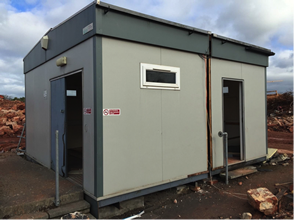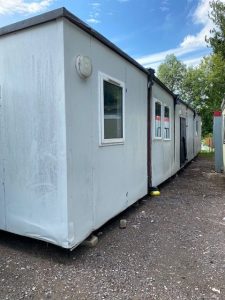Environmental Benefits of Portable Buildings

Environmental Benefits of Portable Buildings
Portable buildings, also known as modular buildings, are partly assembled in factories and then delivered to the construction site where they are built. In some cases, they are fully put together before being delivered to the construction site. They are very popular with startup businesses because they do not cost a lot of money as compared to traditional buildings. They are also popular because there isn’t much preparation needed. The benefits of portable buildings spread beyond finances. Below are some environmental benefits of mobile or modular buildings;
1. Faster Construction
Unlike conventional buildings, portable ones are much easier to construct. This is because they come to the site while wholly assembled from the factory. The buildings are assembled at the factory and shipped to the customer’s site at request. This makes it easier and faster to construct the building. They can also be built with greater predictability and quality control. The fact that they are quick to build means translates into low costs and reduced carbon emission hence the environmental benefits.
Since there is less time involved in the construction process, the amount of fuel and energy used is significantly reduced. By doing so, the amount of carbon mission is also reduced considerably.
2. Building materials can be reused
Another environmental benefit of portable buildings is that the materials used in the making of portable buildings can be reused or recycled. Once the buildings’ use is exhausted, the materials can be used for other purposes. For instance, they can be used as spare parts, and less waste end up in landfills. The wastes can also be used for planned upgrades. For example, instead of a company spending money on new materials for updates, they can acquire recycled materials, make some changes to them, and use them. This is both beneficial for the environment and helps to reduce costs. Also, using recycled materials has no impact on the quality of the structure.
Also, note that the buildings can be moved from one place to another for reusing. For instance, if a company wants to set up a pop-up store or a temporary office in a specific location. Instead of or renting an office space or constructing a building, the company can acquire a portable structure. With a portable building, once the office has served its purpose, the company can move it to a new location. This means that the building can be reused hence making it quite environmentally friendly. It is also cost-efficient because the company does not have to spend more money or lose that which they had invested in the portable structure.
3. They consist of eco-friendly components
Another advantage is that portable buildings contain eco-friendly components. For instance, most of these buildings feature energy-efficient materials like a white reflective roof. The roof allows adequate light to penetrate through hence eliminating the need for electricity when there is natural light. The companies also use recycled materials to construct parts of the buildings like the floors and insulation. By doing so, they avoid dumping a lot of wastes and using new materials. Most builders also use LED light fixtures in the buildings and plumbing systems designed to reduce the amount of waste coming from the structures. These features help to protect the environment and reduce the amount of emissions going to the eco-system. The benefits are increased when the features like lighting are only used when it is necessary.
4. No ground displacement
Portable buildings also environmentally beneficial because there is no ground displacement involved. The displacement of the ground results in a lot of environmental pollution, tampers with the natural state of the environment. This is also beneficial to the builders because the amount of money spent on the construction and ground preparation is less than is the case with traditional buildings. Construction can even begin faster when setting up portable buildings because there isn’t much ground preparation required. The team at Insite Portable Accomodation, based in Gloucestershire, believe that this is crucial as ‘Our clients are often working with tight deadlines, meaning the time they save from utilizing portable buildings is crucial’.
5. Fewer site deliveries are required
Since modular or portable buildings are pre-assembled in the factories, it means that there isn’t much equipment needed at the construction site. Unlike traditional construction, where material deliveries are continuously done, in modular construction, it is not the case. This means that there is less vehicle movement which would result in environmental pollution. Statistics show that in modular construction, the movement of vehicles is reduced by up to 90%. This also helps to reduce the on-site dust levels, congestion and disruption. It also helps to reduce the noise pollution levels on the construction sites. It, therefore, benefits the environment in several angles.
Conclusion
Modular buildings help city planners and other professionals to adopt eco-friendly components and green construction. The benefits of the buildings over traditional ones make them the best option between the two. The structures can be manufactured from different kinds of materials. However, wood is more popular.